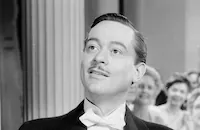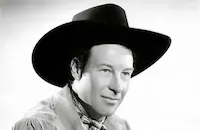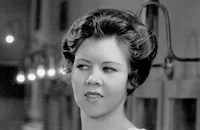Dangerous

Brief Synopsis
Cast & Crew
Alfred E. Green
Bette Davis
Franchot Tone
Margaret Lindsay
Alison Skipworth
John Eldredge
Film Details
Technical Specs

Synopsis
Don Bellows, a prominent New York architect, is engaged to the beautiful and wealthy Gail Armitage, when he meets down-and-out Joyce Heath, who was once the most promising young actress on Broadway. Don feels deeply indebted to Joyce because her performance as Juliet inspired him to become an architect. While rehabilitating her, Don falls in love with the tempestuous actress. Joyce warns him that she is a jinx, convinced that she destroys anything and anyone she touches. Compelled to save her, Don breaks his engagement to Gail and risks his fortune to back the actress in a Broadway show. Before opening night, he insists that they marry, but Joyce resists his proposal, hiding the fact that she is still married to Gordon Heath, an ineffectual but devoted man who was financially ruined by their marriage. Joyce goes to Gordon and begs him for a divorce. When he refuses, she causes an automobile accident that cripples him for life. Her own injuries keep her from opening the show, which fails. Don is ruined, and when he learns that Joyce has deceived him, he accuses her of being a completely selfish woman, her only true jinx. Joyce briefly considers suicide, but eventually sees the truth in Don's accusation. She re-opens the show and, although she truly loves Don, sends him away to marry Gail. The show is a success, and Joyce, now dedicated to a responsible life, goes to visit Gordon and salvage her marriage.

Director
Alfred E. Green
Cast

Bette Davis

Franchot Tone

Margaret Lindsay

Alison Skipworth

John Eldredge

Dick Foran

Walter Walker

Richard Carle

George Irving

Pierre Watkin
Douglas Wood

William Davidson
Milton Kibbee

George Andre Beranger
Larry Mcgrath
Frank O'connor
Mike Morita
Eddie Shubert
Florence Fair

Pauline Garon

Gordon Elliott
Libby Taylor

Craig Reynolds

Edward Keane

Mary Treen
Helen Ericson
Alma Lloyd
Crew
Harry Barnhouse
Harry Joe Brown
Laird Doyle
Leo F. Forbstein
Ernie Haller
Mac Julian
Bernhard Kaun
Orry-kelly
W. H. Patterson
Hugh Reticker
Thomas Richards
Russ Saunders
Jack L. Warner

Videos
Movie Clip



Trailer
Hosted Intro
Film Details
Technical Specs

Award Wins
Best Actress
Articles
Dangerous
Dangerous was made in the wake of Davis's truly phenomenal success as Mildred, the slatternly waitress in Of Human Bondage (1934). As the reviews poured in, many calling it the greatest performance in screen history, Warner Bros. management realized that they had an actress cut out to do more than prop up male-oriented crime films and action pictures. Problem was, the studio wasn't really cut out for the kinds of films in which Davis would flourish. She had to beg them to loan her to RKO Studios for Of Human Bondage and since returning had made a string of programmers, relieved only by her performance as a husband-murderer going mad in Bordertown (1935). But that was really a supporting performance in a vehicle for Paul Muni.
Then came Dangerous, originally titled Hard Luck Woman. The role of Joyce Heath, an actress whose career has been derailed by alcoholism and her own belief that she was a jinx for any man with whom she got involved, was tailor-made for Davis, allowing her to play a wide range of emotions, from angry drunken scenes to the re-awakening of love. The character had been inspired by one of Davis's idols, stage legend Jeanne Eagels, a tragic drug addict who had died at the age of 35.
At first, Davis turned the script down, but studio production chief Hal Wallis convinced her that she could make something special out of the character. Moreover, she would be working with two of Warner Bros.' strongest behind-the-scenes artists, cameraman Ernest Haller and costume designer Orry-Kelly. At the start of the film, a young architect and theatre fan discovers Joyce in a seedy bar. Davis had seen similar women during her early days in the theatre and insisted that nothing be done to glamorize Joyce for these scenes. Haller shot her straight on, without any flattering lighting or angles, while Kelly designed and then aged a simple tweed suit that had clearly seen better days. Even as Joyce sobered up and started working again, Kelly kept her in simple, although more attractive costumes, so that no matter how far the script might descend into soap opera, the characterization gave it a firm grounding in reality.
One bonus Davis got out of the film was her leading man. Warner Bros. had decided to bolster her marquee allure by borrowing Franchot Tone, who had recently scored a hit in Mutiny on the Bounty (1935), from MGM. Stuck in a faltering marriage, Davis was immediately drawn to the patrician actor, who at the time was engaged to Joan Crawford. Davis would always describe it as an unrequited crush, but years later producer Harry Joe Brown would reveal that he had walked in on the two in a compromising position. Crawford apparently knew about the liaison, but didn't break the engagement. Instead, she visited the set whenever possible to take her fiancé to lunch while Davis seethed with jealousy. Most biographers believe this was the start of the legendary feud between the two divas.
When the film finished production, the Davis-Tone affair ended. But the acclaim was just beginning. Even critics who hadn't cared for the film itself were bowled over by Davis's performance. The film even gave Davis one of the most famous reviews of her career, from E. Arnot Robertson in Picture Post: "I think Bette Davis would probably have been burned as a witch if she had lived two or three hundred years ago. She gives the curious feeling of being charged with power which can find no ordinary outlet."
Davis' previous dramatic triumph, Of Human Bondage, had gone unnoticed by the Motion Picture Academy®, partly because the film had been made on loan-out, and neither the studio that made it nor Davis's home studio did much to publicize the performance (Davis would later claim that studio head Jack Warner had actively campaigned against her). The lack of even a nomination had triggered an industry-wide scandal and a write-in campaign that failed to bring her the honor. This time out, however, Davis was not only nominated but also considered a shoo-in. Davis almost skipped the ceremonies, however, partly because she was recovering from the flu, partly because she thought the award belonged to Katharine Hepburn for Alice Adams (1935), and partly out of resentment that it was a lesser film that had brought her first Oscar® nomination. Only a last-minute phone call from Warner convinced her to attend, where she was handed the award by film pioneer D.W. Griffith. For a moment, she hoped this meant an improvement in her lot at Warners, but it soon became apparent that they were still going to bury her in minor films that could cash in quickly on her new stardom. They even sold her image to Quaker Puffed Rice to advertise "Breakfast fit for a queen of the screen -- Academy Award Winner Bette Davis." Within four months, she would walk out on the studio, fighting to take back control of her career. Although she would lose in the courts, her rebellion would lead to ever better roles built on the same manic intensity that had made her such a hit in Dangerous.
Producer: Harry Joe Brown
Director: Alfred E. Green
Screenplay: Laird Doyle
Cinematography: Ernest Haller
Art Direction: Hugh Reticker
Music: Leo F. Forbstein
Cast: Bette Davis (Joyce Heath), Franchot Tone (Don Bellows), Margaret Lindsay (Gail Armitage), Alison Skipworth (Mrs. Williams), John Eldredge (Gorton Heath), Dick Foran (Teddy), Douglas Wood (Elmont).
BW-79m.
by Frank Miller

Dangerous
Quotes
You delight me! You have the most amazing lack of humor than anyone I've ever known!- Joyce Heath
I'm bad for people. I don't mean to be, but I can't help myself.- Joyce Heath
It's either going to be your life or mine. If you're killed, I'll be free. If I'm killed it really doesn't matter. If we both die. Good riddance!- Joyce Heath
I am now humiliated to the point where I must thank you!- Joyce Heath
Trivia
Notes
The working title of the film was Hard Luck Dame. According to Warner Bros. files, other suggested titles were The Jinx Woman, Tomorrow Ends, But to Die, Forever Ends at Dawn, Strange Woman, Strange Star and Evil Star. The last title was suggested by Bette Davis. Bette Davis won the Oscar for Best Actress for her performance. Contemporary and modern critics speculate that Davis was awarded the Oscar as much for her performance in RKO's 1934 film Of Human Bondage for which she was not even nominated, as for her work in this picture. Alison Skipworth was borrowed from Paramount and Franchot Tone from M-G-M for the film. Dangerous was remade by Warner Bros. in 1941 as Singapore Woman, starring Brenda Marshall and directed by Jean Negulesco.

Miscellaneous Notes
Released in United States 1935
Released in United States 1935















